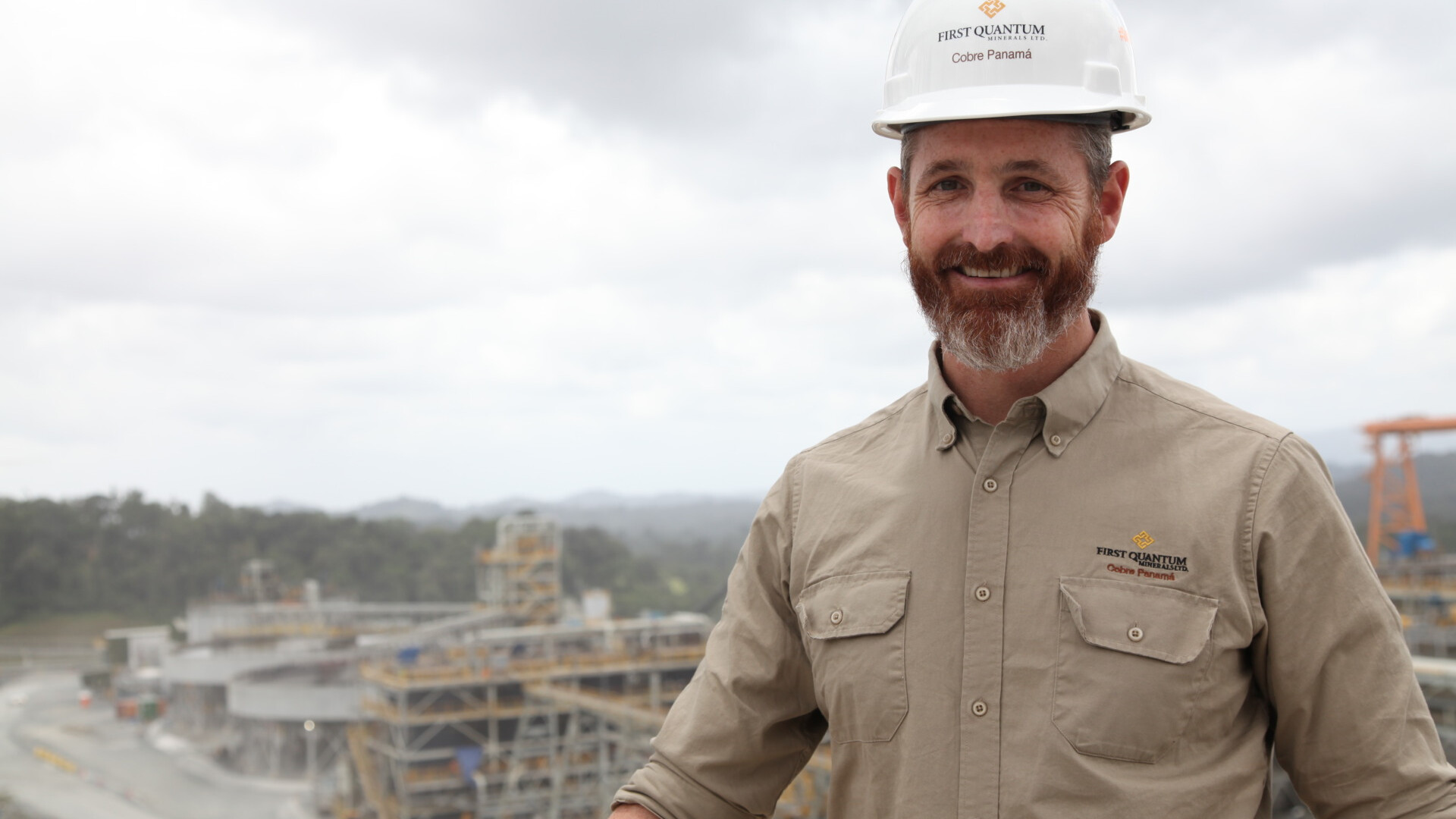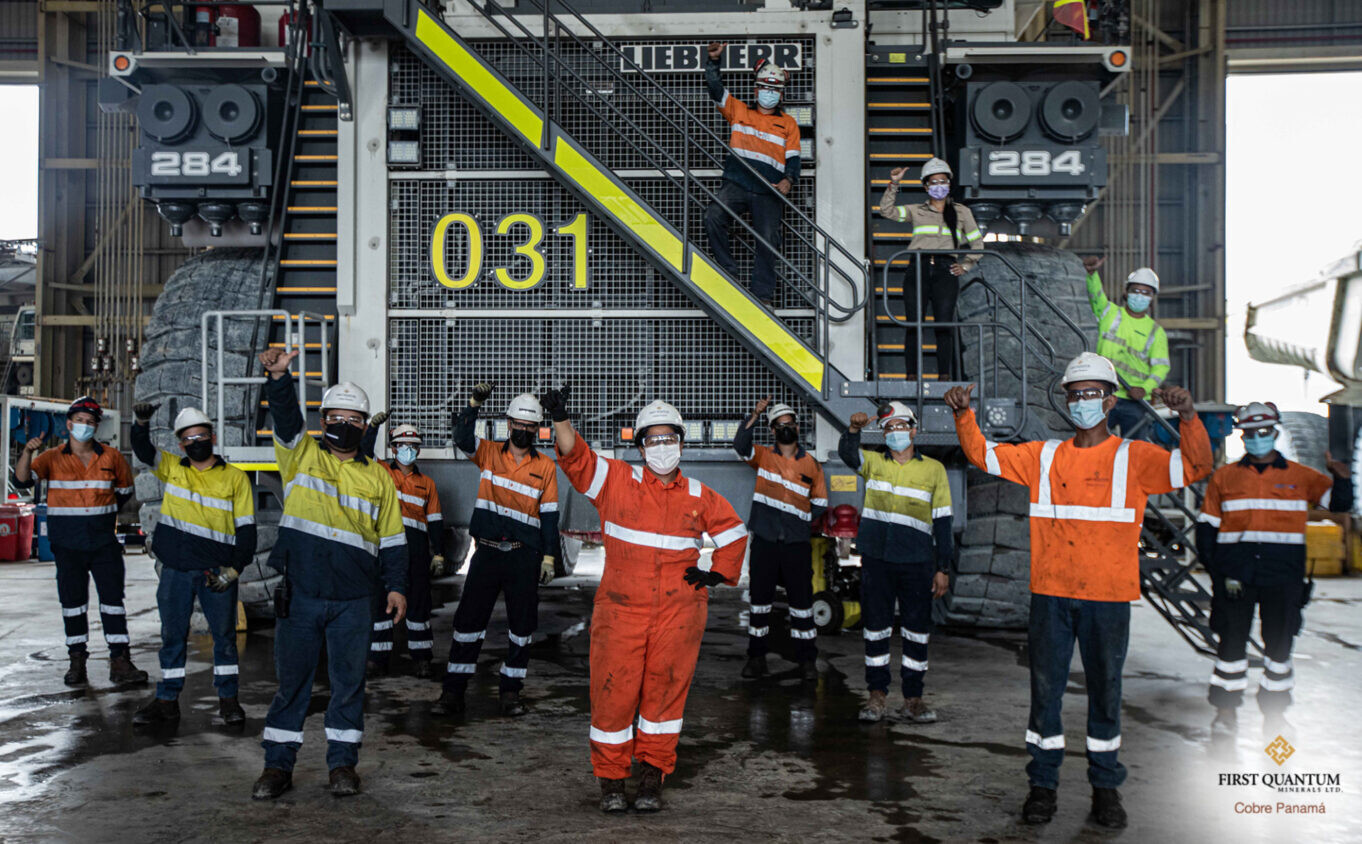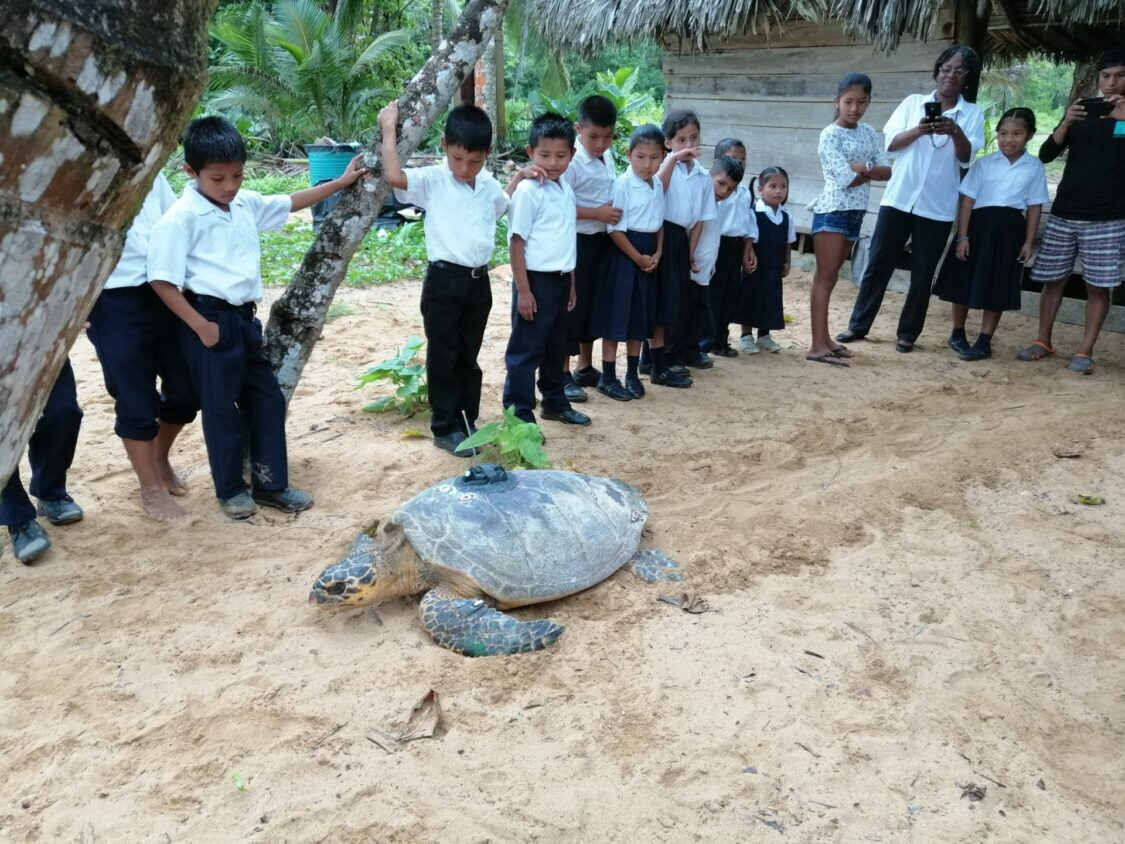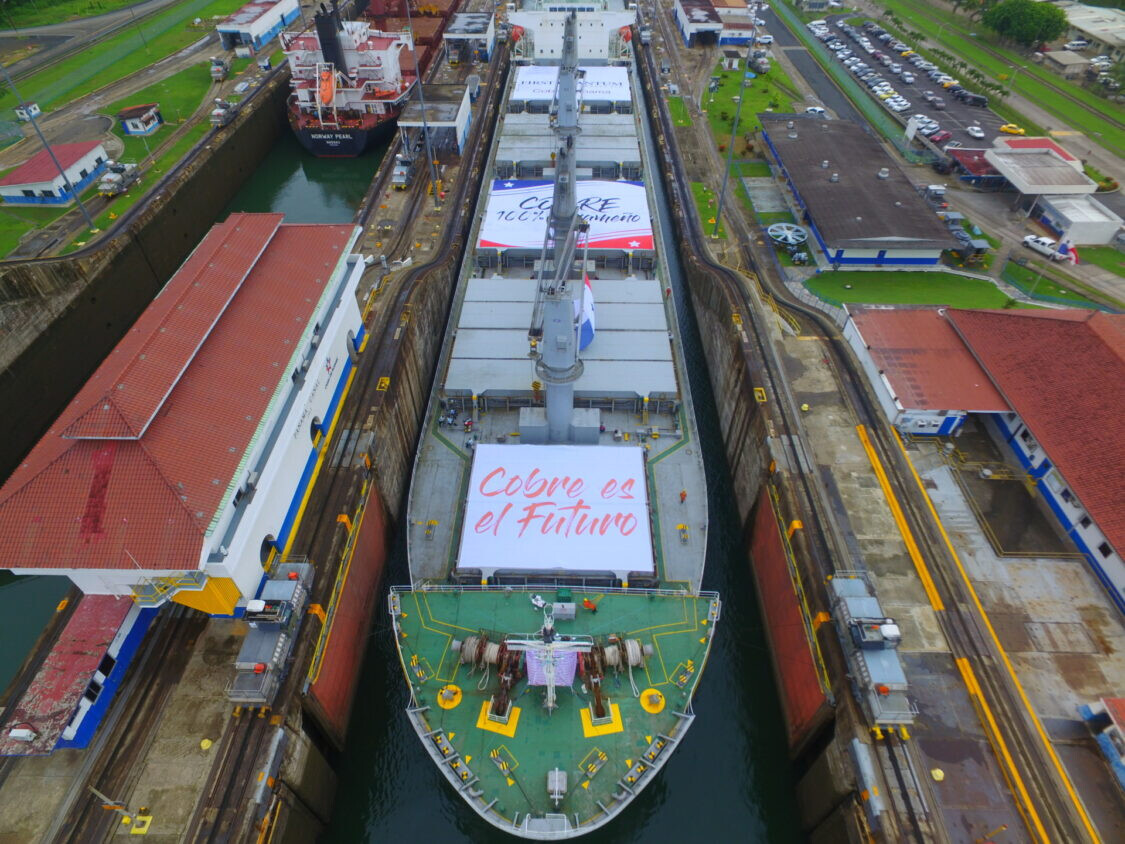Interview with Tristan Pascall, Chief Operating Officer of First Quantum Minerals
We talk with Tristan Pascall, COO, First Quantum Minerals, to explore how mega copper mines, like Cobre Panama, can help fight climate change...

LatAm INVESTOR: Please give us a profile of First Quantum in Latin America.
Tristan Pascall: First Quantum was born in Africa and is now present in eight other countries around the world. Prior to our involvement at Cobre Panama, we had some exploration projects in the region, so we had already put boots on the ground. But now our presence in Latin America is dominated by Cobre Panama. We own 90% of the asset alongside our 10% partners KOMIR and together we have invested $6.7billion in developing a mine that will be running for at least 35 years. Commercial production began in September 2019 and is going very well. Large mines are difficult to develop – for both technical and social reasons – so to do that and come through the pandemic is a big achievement.
Our production is on track this year to meet the guidance of between 310,000 and 335,000 tonnes of copper based on its current level of 85 million tonnes of throughput per year. We plan to grow the mine and expand operations to 100 million tonnes of throughput per year, which we are on track to do by 2023. During the peak of construction, we employed 13,000 people directly and now, at steady-state operation, we have approximately 5,000 direct employees. However, if you combine direct and indirect employment we support an estimated 40,000 jobs in Panama through local procurement, manufacture and services with more than 1,800 Panamanian SMEs acting as providers. Over the next 30 years we expect to contribute around $1.8billion year to the national economy, of which between $1.4billion and $1.5billion is destined to small, medium and large Panamanian companies.
Our platform in Panama has helped us learn about Latin America. More than 90% of our staff is now Panamanian, complimented by experts from mining countries around the world. It has given a Latin American flavour to the culture of First Quantum Minerals, of which we are very proud, and which should help us develop our other exciting projects in the region; Taca Taca and Haquira. We want First Quantum to become a partner of choice in developing large Latin American copper projects.

LAI: To combat climate change the world will need dozens more mines like Cobre Panama; how difficult is it to build an environmentally-responsible mine?
TP: The world needs mining more than ever. As a global community we need to lift people in emerging economies like Latin America, out of poverty. And we need to shift all economies to renewable energy and transition to the green economy. But we can only do that with environmentally and socially-responsible mining.
Cobre Panama is a great example of this. It’s a massive mine with excellent production performance but it also respects the local society and environment as we adhere to the highest ESG standards in the world. The mine was built in accordance with the Equator Principles, World Bank Environmental Guidelines and IFC Performance Standards. We had to submit 14,000 pages of impact studies to get approval from the Ministry of Environment to ensure we covered all of its 371 requirements. And this is an ongoing commitment as we have six-monthly environmental audits by the government plus additional checks by local communities. The local audits are very important because they empower local people to understand and monitor the impact of the mine.

LAI: Can large mines really be environmentally responsible?
We are such a massive operation that we are bound to have an impact and we understand this. We need permits for everything from a port to a power station. So, we have to ensure that, despite our impact, we make things better than they were before. We work with leading international organisations, such as the Smithsonian Tropical Research Institute, the Sea Turtle Conservancy, the Peregrine Fund and the Missouri Botanical Gardens , to protect the local environment. Since beginning Cobre Panama we have seen a tenfold increase in turtle nests and four-fold increase of two endangered frog species. Moreover, we have committed to planting 10,475 hectares of trees in a bid to counter the deforestation that Panama has suffered in recent decades. Our environmental and social team comprises 200 committed and passionate people and its thanks to their hard work that our mine is having a positive impact.
We are also working hard to reduce the GHG emissions of our operations. We are industry-leading implementers of trolley assist technology. We are looking at everything from electric fleets to recycle trucks to bring down our carbon footprint. Some people focus on the dramatic changes, which are important, but a lot of improvement comes from continuous optimisation. For example, we work with machine learning and AI to drive down the energy intensity of our operations.
We are such a massive operation that we are bound to have an impact and we understand this
The biggest single action we will take to cut emissions will be to address the coal-fired power station at Cobre Panama. Later this year we will announce our plan for decarbonisation. Our expansion plans at the site will not be powered with coal and we will then find ways to resolve the coal plant, which we inherited when we bought the project. It will not be easy, as the coal plant has a positive and stabilising impact on the national grid and pricing for local communities, particularly in the dry months when Panama runs short of hydro power.
“We recognise that mining has an environmental and social impact, but it is important to also balance this against its economic impacts. Although the full project area demarked for Cobre Panama is approximately 13,000 hectares, the total area approved for direct impact is less than 6,000 hectares. The mine has committed to a net positive impact to biodiversity and the environment across this area, including 10,475 hectares of reforestation, and to the necessary social and employment practices to ensure positive community contribution. By comparison, according to World Bank data farming occupies around 565,000 hectares in arable/ploughed land in Panama; plus a further 1.2 million hectares in pasture/grazing land. Cobre Panama uses approximately 1% of the land used for arable/ploughed farming in Panama, and yet Cobre Panama contributes the equivalent to 85% of the total production of the primary sector of the national economy, 3.5% of total GDP.”

LAI: Is there a paradox where the rise in ESG investment demands more copper for electrification yet the same principles also make it more difficult to develop mines?
TP: It’s a very interesting paradox. We see rising copper demand from the global post-pandemic economic recovery and also from the larger shift to a renewable economy. In Latin America, Africa and South-East Asia copper demand is being driven by economic recovery. But in China, Europe and the US it is all about the switch to greener technologies. We are already seeing changes in the products needed by large industrialists – energy and car companies for example – as the world moves from petroleum to copper, nickel and lithium.
But you can’t build this new world without the right raw materials. The figures are significant. Just keeping on track with climate change commitments by 2030 means the number of electric vehicles has to be ten times higher than it was last year. The number of electric charging stations needs increase 31 times and power generation must increase by 300%. That will put big pressure on the global mining industry, which may have to increase metal production by 500%.
That will be difficult because there are greater hurdles placed in front of new projects by local communities and governments. We must prove and win their trust but the constant changes in regulation and taxation act as a disincentive to the very large upfront investment that mining needs. As we look for more copper the grades are decreasing, which will make the industry even more capital intensive. All the uncertainty is delaying investment which is why we see very few new mining projects going ahead. Those you see coming online at the moment were already in development 10 to 15 years ago. The development time for a new mining project has now gone up to 16 years, while building a wind farm in North America takes a decade. Onshore wind requires around 4 to 6 tonnes per megawatt (MW) while offshore wind needs between 8 to 10 tonnes per MW. So people want renewable energy but it takes ten years to build the power plants and even longer to get the copper. If governments do not respond with clear market signals the metal supply will not be sufficient for the transition.